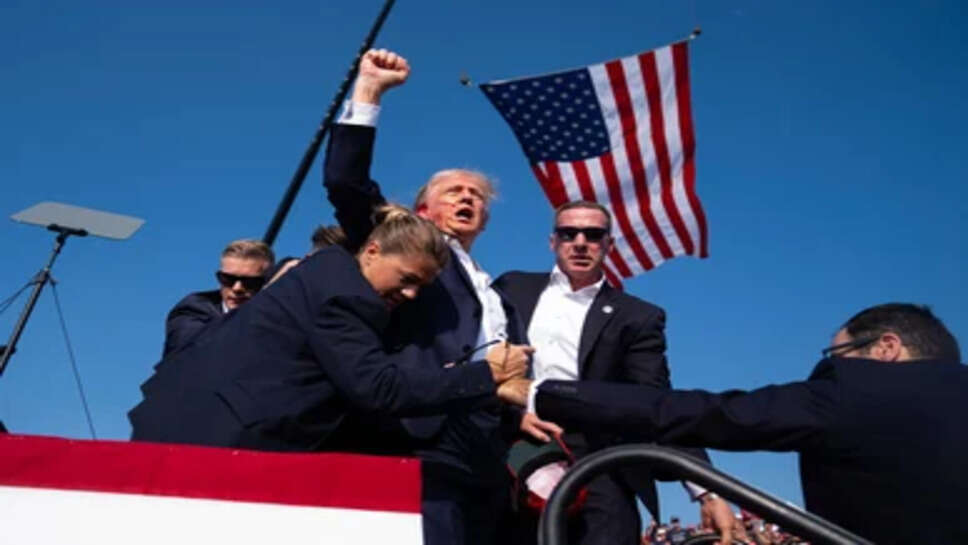India Treads Cautiously Amid Trump’s Tariff Bombshell

In a move that has sent ripples through corridors of commerce in New Delhi, former U.S. President Donald Trump’s proposal of a 25% base tariff with added penalties has disrupted India’s strategic calculations on trade. While Indian negotiators had been working toward securing a balanced trade agreement with the U.S., the sudden shift in tone and potential return of Trump to the White House in 2025 has forced officials to reevaluate the timing, terms, and long-term viability of any new deal.
According to senior government officials, while India remains open to a fair and mutually beneficial agreement, it is unwilling to compromise its key interests or rush into a deal that could prove detrimental in the long run—especially under pressure from uncertain or politically motivated tariff threats.
Trump’s Trade Legacy Returns to Haunt Negotiations
During his previous tenure, Trump had adopted a sharply protectionist trade stance, repeatedly criticising countries like India for what he described as "unfair treatment" of American products. He had revoked India’s GSP (Generalized System of Preferences) status and imposed tariffs on Indian steel and aluminium, pushing the two democracies into a trade tussle that saw retaliatory duties slapped on American goods such as almonds and apples.
Now, with Trump once again dominating the Republican nomination for the 2024 U.S. presidential race, his recent comments at a campaign rally, threatening a 25% baseline tariff on all imports, have stirred anxiety in emerging economies, particularly India. What worries Indian policymakers more is his hint at additional penalties for countries that “manipulate trade” or “benefit disproportionately” from the American consumer market.
India’s Calculated Approach
Behind closed doors, Indian trade officials and diplomats are recalibrating their engagement strategies. They acknowledge that while the U.S. remains a critical trade and strategic partner, decisions made in haste—especially under the pressure of aggressive demands—could undercut India’s domestic manufacturing goals under ‘Make in India’ and its broader economic autonomy.
An official with direct knowledge of the talks said, “We are aware of the uncertainties in the U.S. political climate. But we must not allow external pressure to dictate terms that could damage Indian industry, particularly MSMEs and farmers. We want a deal, but not a bad one.”
What’s at Stake
India has been seeking greater access for its pharmaceuticals, textiles, IT services, and agriculture products in the U.S. market. In return, Washington wants India to lower tariffs on American goods such as Harley-Davidson motorcycles, medical devices, and farm products, as well as address concerns over digital trade restrictions and data localisation norms.
However, India's resistance to sweeping liberalisation, especially in sectors sensitive to its economic and electoral base, has remained firm. Indian officials point out that while India has opened up substantially in the last decade, it still needs to protect its nascent industries against sudden exposure to international competition.
No Compromise on Strategic Sovereignty
The proposed 25% tariff, if implemented, could have significant spillover effects on sectors like engineering goods, auto parts, apparel, and electronics—key exports for India. More importantly, a blanket tariff structure without exemption pathways could erode trust and reignite trade tensions that the Biden administration had managed to stabilise during its tenure.
In this context, India is also mindful of the broader geopolitical undercurrents. The Indo-Pacific strategy, countering China’s influence, defence cooperation via Quad, and clean energy collaboration are areas where the two democracies have found common ground. Trade, therefore, remains a foundational but delicate pillar in this wider relationship.
“Strategic autonomy is non-negotiable,” a top official added. “We will not enter into any framework that puts our data, digital space, or farm sector at risk—especially under duress.”
Wait and Watch Approach
Given the uncertainty surrounding the U.S. presidential elections and Trump’s rhetoric possibly being campaign posturing, New Delhi is adopting a ‘wait and watch’ stance. The government believes it is prudent to continue technical-level discussions while keeping a diplomatic buffer in place to deal with potential U.S. policy reversals.
The upcoming G20 trade ministerial meeting and expected bilateral interactions at forums like the United Nations General Assembly and Indo-Pacific Economic Framework (IPEF) may offer platforms to reset or clarify intentions on both sides.
In parallel, India is strengthening trade ties with the European Union, Australia, UAE, and the UK, as part of its diversified trade strategy. These deals are expected to give India more leverage and resilience, should any unilateral measures emerge from Washington in the coming year.
Political Consensus at Home
Interestingly, there appears to be bipartisan political consensus in India that any trade agreement with the U.S. must be transparent, consultative, and not rushed. Industry leaders and trade associations have also urged the government to safeguard critical sectors, maintain tariff flexibility, and demand reciprocal benefits—particularly in services and skilled labour mobility.
“We should not fall into a trap of signing a deal simply for the optics,” said a trade analyst in Delhi. “The U.S. wants market access and India wants services liberalisation—it’s a complex give-and-take. But under threat or bullying, the chances of fair negotiation diminish.”
Looking Ahead
While a final trade agreement may not be on the cards before the U.S. elections, both sides may continue to work on sector-specific outcomes, early harvest agreements, or dispute settlement improvements. But the broader message from India is clear: a robust, respectful trade relationship cannot be built on intimidation.
